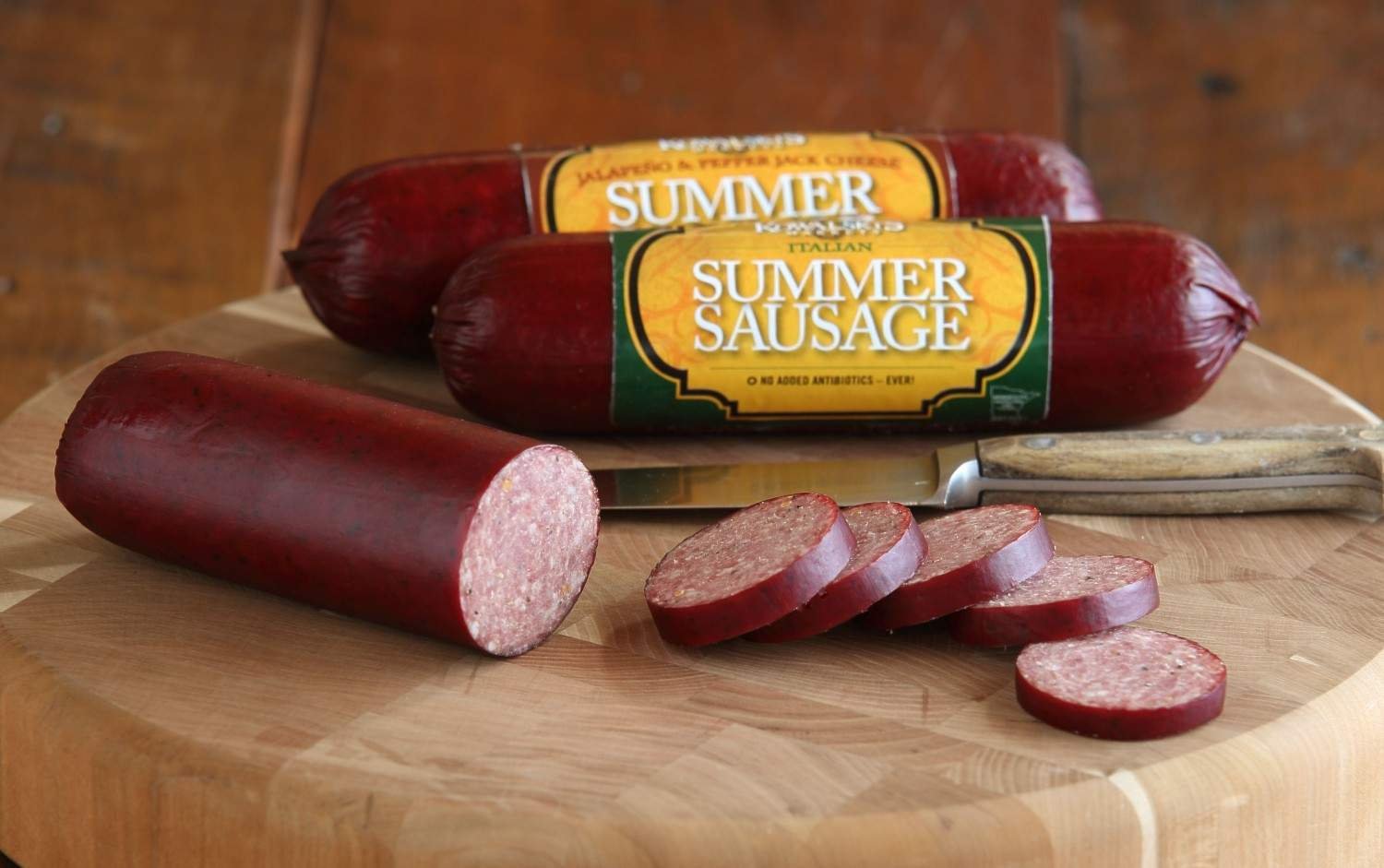The summer sausage is a well-loved and delicious meat that people appreciate for its distinctive quality and its versatility. The type of sausage that is usually made with meat, pork, or even a mixture of both, has an extensive history and is renowned for its ability to store and eat without refrigeration. From its beginnings all the way to how it’s produced, let’s discover the factors that make summer sausage the most popular snack, meal as well as a charcuterie platter essential.
What Is Summer Sausage?
It is a form of semi-dry, dry sausage that goes to the past. Originating in Europe and then crafted to last for lengthy time without refrigeration. This is ideal in warmer weather, hence the term “summer sausage.” This method of curing made it easier to preserve the meat and also made it suitable for anyone who was travelling or working outdoors.
The most common form of sausage is comprised of beef, pork or a mixture of both. It is tangy and has a delicious flavor resulting from the fermenting process as well as the use of other spices such as garlic, mustard seeds, as well as black pepper. A lot of people also appreciate the firmness of its texture which makes it simple to cut and serve.
How Is Summer Sausage Made?
Making summer sausage includes curing, making it ferment, and then drying. These are the key steps in preserving the sausage and creating its distinctive flavour.
- Curing: The meat is blended with sodium nitrite and salt to help keep it fresh and help prevent the growth of bacteria. Curing is essential in creating the sausage’s unique flavour.
- Fermentation: Following curing, the sausage will be permitted to ferment. The process gives it the characteristic tangy flavour, which is because of the lactic acid bacteria destroying sugars present in the mixture of meat.
- Drying: It is then dried. This eliminates moisture, making it stable on the shelf. A variety of sausages are also smoked in order to increase the flavour of the sausage and to add the appearance of preservation.
Every step is a factor in summer sausage’s flavour as well as texture and shelf-life. This way of preserving allows sausages to be kept indefinitely without refrigeration but some sausages will require refrigeration following having been cooked.
Types of Summer Sausage
There are a variety of summer sausages, each having slight variations in the ingredients and cooking.
- The traditional Pork and beef: Made from an amalgamation of beef and pork, it has a delicate taste and is the most popular kind.
- All-Beef: The version that is used here is made with only beef, which gives the flavour a little leaner.
- Garlic Sausage for Summer: Garlic adds the flavor of the sausage which makes it very popular with people who love garlic.
- Venison summer sausage: If you like gamey flavours Venison sausage from summer is a feature which is often a favourite among those who hunt and are outdoor lovers.
Every type comes with its own flavour profile that allows the consumer to pick according to their personal preferences.
Nutritional Information
Sausage is a high-protein product that supplies vital nutrients but must be eaten in moderate amounts due to its sodium and fat material. A typical portion (1 ounce) is approximately 100 calories. It also contains eight grams of fat and five grams of protein as well as 500 milligrams of sodium.
It’s also a great source of protein as well as certain nutrients like B12 however, it’s accurate to have summer sausages as a treat on occasion instead of an everyday staple. In order to keep your diet balanced take a look at pairing the sausage with fresh vegetables fruit, and whole grain crackers.
How to Enjoy Summer Sausage
The desirable qualities of summer sausage is its variety. Here are some ways to take advantage of the sausage:
- Charcuterie boards: The summer sausage is great for charcuterie plates, which are paired with crackers, cheeses or nuts as well as fruits. Its tart flavour is well balanced with soft cheeses such as gouda or cheddar.
- Sandwiches: Add slices of sausage on sandwiches to grant a delightful and savoury kick. This is a great choice with pickles, mustard as well as lettuce served on bread made from whole grains.
- Snacks: Sausage cut into slices is a great, protein-rich snack. It’s simple to pack for travel, camping and hiking because of the stability of its shelf.
- Pizza Topping: For a unique twist, use summer sausage as a pizza topping. The smoky taste adds flavour to homemade pizza.
- Eggs as well as Breakfast Dishes: Sausages can be sliced and added to breakfast dishes or scrambled eggs to give a full and satisfying breakfast to start your morning.
How to Store Summer Sausage
Sausages that aren’t used up are stored in a dry, cool location for several months, which makes it a great ingredient in your pantry. After opening the sausage, it’s perfect to store the sausage in the fridge for a longer period of time to ensure its freshness. Keep the food in an airtight container, or put it in a plastic wrap so that it doesn’t dry out. A proper storage arrangement can make it stay for weeks following the opening.
Health Considerations
Though summer sausages are delicious, however, it’s high in calories and sodium. Anyone who is trying to reduce their intake of sodium ought to enjoy the sausage in moderate amounts. Also, certain sausages are contaminated with nitrates, or nitrites which are preservatives used to stop the growth of bacteria however, they have been associated with some health issues in high quantities. Choose a sausage that is free of nitrates If this concerns you.
To eat a more healthy snack try pairing small servings of summer sausages with a variety of fresh fruits, whole-grain crackers or cheese with low fat. This way, you can take pleasure in the flavour while also balancing the number of nutrients you consume.
Making Summer Sausage at Home
If you’re interested in DIY sausage making, sausage is a recipe that can be prepared by yourself. Making homemade sausages lets you manage the ingredients, alter the spice levels, and make more nutritious features.
In order to make this to make it, you’ll require ground meat (typically made up of pork and beef) Curing salt, spice mixes (like mustard seeds as well as garlic powder and black pepper) as well as the sausage casing. The method involves mixing the ingredients, and putting it into the casings of your choice after which they are cured. Finally, you allow it to air dry and smoke. While it takes a bit of patience making homemade sausages for summer can be rewarding, especially for people who enjoy meat.
Fun Facts About Summer Sausage
- Historic Significance: The history of HTML0 is that in Europe Summer sausages have been used for hundreds of years to be a method to preserve the meat prior to refrigeration.
- It’s a hit across the U.S.: It’s particularly loved throughout the Midwest and is frequently included in Christmas gift baskets.
- Lang Shelf Time: It’s dry and cures the summer sausage will endure for a lengthy period of time which makes it perfect for outdoor pursuits.
Conclusion
Summer sausage has an interesting background, starting with its beginnings in Europe and on to become a well-known American snack. If it’s served as a snack on a charcuterie plate or added to sandwiches or simply as a snack, its delicious flavour and long shelf-life are a major draw of lots of. Although it’s desirable to consume in moderation, the summer sausage is a tasty and easy feature for snacks and meals as well.












